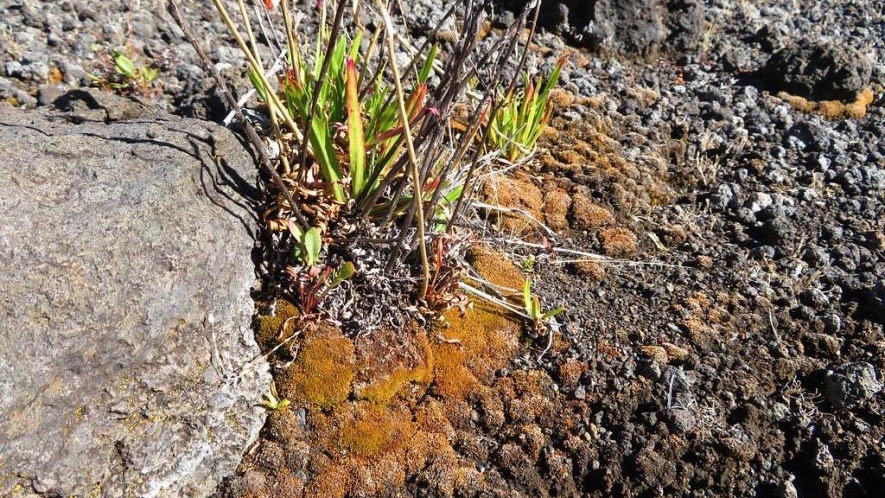‘Biocrust’ is an essential part of the soil, especially in deserts and semi-arid regions. The biocrust provides a conducive environment for the survival of organisms in desert conditions. This important soil component comprises fungi, lichens, mosses, and algae of different types (especially the blue-green algae), and other microbes. It retains water and produces nutrients like nitrogen for use by other organisms.
Destruction of the biocrust can seriously impact the desert ecosystem, and recent findings hint that it is indeed in danger. Climate change is destroying the integrity of the biocrust. A latest study published in PNAS (Proceeding of the National Academy of Sciences) has brought out the concerning facts.
Biocrusts cover around 12% of all land on Earth, indicating the essentiality of their well-being and survival. The disappearance of biocrusts can enhance the expansion of the deserts. This vital part of the soil in deserts and other drylands is a result of the conglomeration of lives for centuries. It helps retain the little water available in such ecosystems and produces life-sustaining components like nitrogen and carbon.
It was presumed that the biocrust could take the heat as it exists in hot and dry regions. However, a study in 2013 compelled researchers to change some of these views. The 2013 study published in Science found the changing composition of microbes in the biocrust due to climate change. And now, the latest PNAS study surveyed the organisms in biocrusts in the grassland of Canyonlands National Park in Utah, the USA, which revealed that some of the important lichens are vulnerable and fast depleting.
Researchers from the US Geological Survey (USGS) visited the park and surveyed specific samples in 12 soccer field-sized plots. The researchers used to visit the field twice a year since 1996. Initially, the researchers wanted to study the spread of cheatgrass, a non-native plant and its effects on the biocrusts and other lives. They also compared their findings with a previous study in the same park done in the late 1960s. Rebecca Finger Higgens, leading the study and an ecologist of USGS, said, “The U.S. Southwest is rapidly warming, and Canyonlands is no exception. Weather measurements over the past 50 years reveal temperatures in that park have increased 0.27°C each decade, and recent summers have been particularly warm.”
In their study, the team found that almost all lichens (a symbiotic partnership between fungus and algae) are waning, which raises alarm bells for the health of biocrusts. These lichens are nitrogen-fixing organisms that help in the survival of other organisms. In 1967, they made up 19% of the biocrust, and since then, they have seen a continuous decline, with present composition at 5%.
The lichens undergo growth fluctuations from year to year. However, any natural decline was compensated. But the latest findings suggest that the lichens are showing no signs of reviving. According to Finger-Higgens, the biocrust may have reached the tipping point.
The disappearing biocrust will lead to soil dry-out. Even if a biocrust exists, but with very few lichens, it will produce lesser nitrogen fertilizer that will concomitantly impact the survival of other plants. This, in turn, will lead to more bare ground. Explaining the cascading effect, Finger-Higgens said, “Because the animals rely on the plants that rely on nutrients from the biocrust, the loss of biocrust can have a cascading effect on the entire ecosystem.”
“The risk extends beyond Canyonlands. From her own team’s studies, Weber estimates that by 2070, 25% to 40% of the biocrusts will be gone. There will be more dust, less stable and drier soils, and likely a change in what can live in these dry places,” Finger-Higgens said further.





